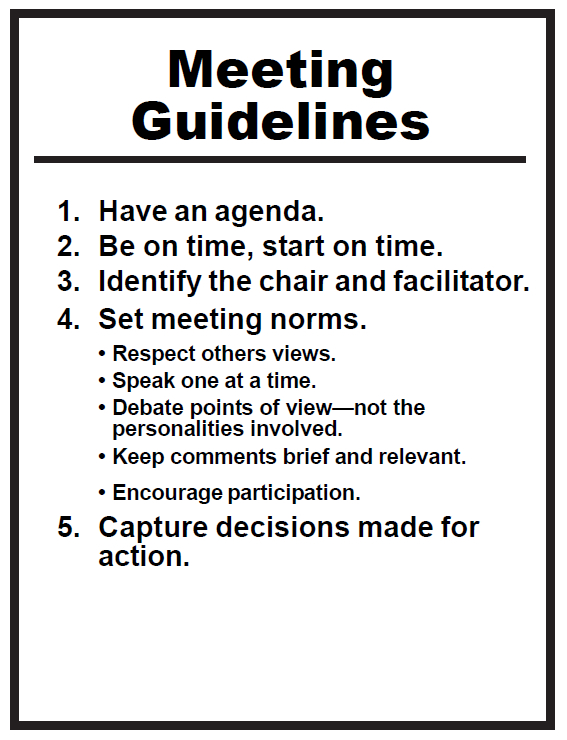Running effective meetings

What is a meeting?
A meeting is where people come together to resolve problems, answer questions, make decisions, network, and share knowledge.
What makes a meeting effective?
Effective meetings are the product of three simple steps:
Step I: Planning
- Define the purpose, required outcomes, and approriate attendees,
- Determine the best format to achieve the purpose. In some cases, you will discover that a conference call or email exchange is just as effective as face-to-face.
Step II: Conducting
1. Establish the following roles:
| Role | Responsibility |
| Chair | Manages the content of the meeting, sets the agenda, and decides what, when, and how meeting tasks are accomplished. |
| Facilitator |
In smaller meetings, a facilitator may not be necessary. However, their responsibilities are:
|
| Reporter | Records meeting minutes and reports outcomes. |
2. Use the following process:
- Within the cultural norms, Be on time, start on time.
- Display and explain the agenda and desired outcomes.
- Remain focused on the agenda and outcomes during the meeting’s discussion. If needed, participants can be reminded of the outcomes to politely refocus off-the-subject discussions.
- Record decisions and assign responsibility for action items.
Step III: Concluding
- Conclude the meeting by reviewing action items, highlighting positive outcomes, and asking for any final (brief) comments.
- Thank participants for their time and contributions.
- If required, schedule a time and venue for the next meeting.

Developed with input from MA Bell, AD Atkinson, and D Shires







